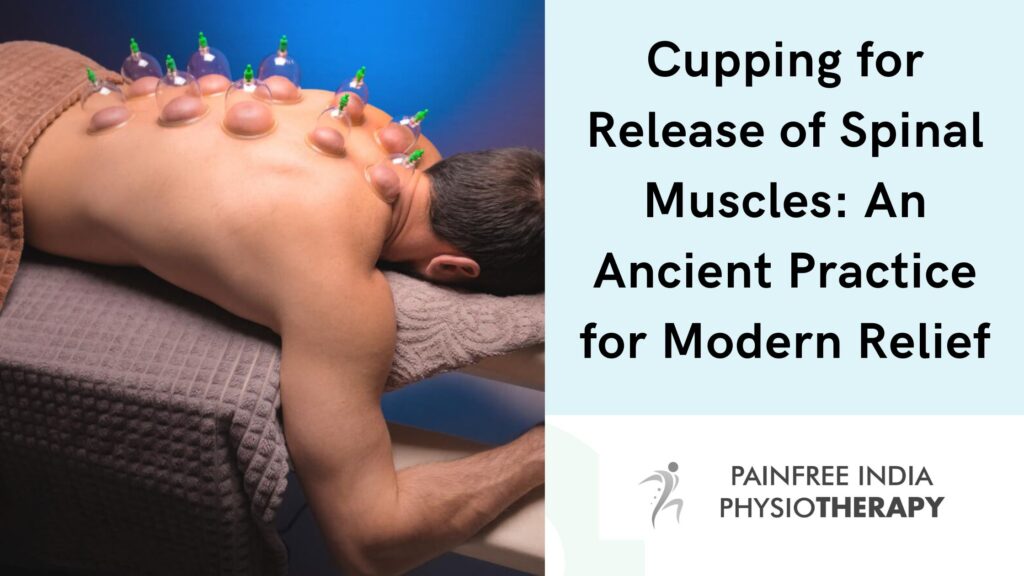
In this hectic world, where our lifestyles barely leave us enough time to pause, we often sit for hours without even recalling our last standing moment. This triggers back pain and spinal issues. When posture is to blame, injury is the culprit, or the macumber of seasons is the cause, we often deal with muscle feelings and pain in the spine. Though medicine and surgery are still regarded to be certain relief miracles, all doctors and patients are now increasingly tending to search for the causes of spinal problems and use complementary therapies like cupping that help to get rid of them.
What is Cupping Therapy?
Cupping therapy (popularized or propagandized long ago) depicts a traditional style of alternative medicine as old as millennia. A specific system uses plastic cups on the skin, which are supposed to be cups to prevent negative pressure, increase blood flow, reduce muscle tension, and promote healing. The cups are usually made of different available materials, for example, glass, bamboo, or silicone, and are usually heated before they are put on the skin.
How Does Cupping Help with Spinal Muscle Release?
The muscles around the spine are in charge of holding the spine and physically supporting it. Nevertheless, unwanted conditions exist, such as tension, knotting, or adhesions that can get there by being very painful, restricting movement, and even nerve impingement. Cupping therapy is a beautiful instrument that helps you peel away myofascial pains and adhesions, thereby relieving pain and enhancing a person’s overall mobility.
The suction effect of the cups is the main reason for that. It is intended to boost blood flow to the affected region, which, in turn, facilitates oxygen and nutrient delivery to the muscles. This continuous circulation enables the riddance of metabolic waste products and hence tackles inflammation, subsequently improving recovery and healing speed.
Combining Cupping with Other Therapies
Cupping therapy, when independent, could be helpful, albeit it works better when combined with other methods supporting a corroborative approach. An example would be the use of cupping therapy by a neuro physiotherapist in Gurgaon in treatment that may also include techniques such as
Interferential Therapy (IFT) and exercise therapy.
Interferential therapy (IFT) is a type of electrical stimulation that, without intervention, allows for the depreciation of ain and facilitates the healing process. The resulting outcomes after a combination of cupping therapy with IFT can only foreshadow the benefits of IFT as a standalone treatment.
Along with cupping, chiropractic therapy is another type of complementary therapy that may also be effective. Health care providers specialize in chiropractic manipulation of the spine with spinal adjustments and manipulations, usually to relieve additional pressure on spinal nerves resulting from spine misalignment. Moreover, cupping reduces muscular tightness, which might fight back regular adjustment. Chiropractic therapy may be more effective, and positive outcomes may be achieved.
At-home cupping and Physiotherapist Support
Often (cupping therapy is) carried out in clinics based on studies. There is also (a technique called) at-home cupping kits (that are) free to use by people (who prefer to) do DIY treatment. You are advised to seek counsel from a physiotherapist at home in Gurgaon before you proceed with cupping on your own.
Safety Considerations and Precautions
Despite the broad view that cupping therapy is safe with a professional, precautions should be taken to ensure better treatment. Cupping should not be applied over areas with open wounds or skin conditions such as burns, sensitive skin, or closed scar tissues. Besides that, minding the practitioner’s directions exactly and informing if you are not comfortable or worried during the process is also very important.
It must be noted that after the cupping session, one can have bruising or discolored spots on the skin where the cups were put on in temporary effect. This is a typical response that usually resolves within the first three days.
Conclusion
A curing session is an ancient treat that is effective in helping you with muscle tension, promoting your body’s healing, and serving a wide range of health concerns. Cupping can be a supportive option for those enduring spinal muscle stiffness, pain, and restricted movements when coupled with other therapies like Interferential therapy (IFT) and chiropractic therapy.
Through close collaboration with a qualified health professional and incorporating cupping into an all-encompassing treatment plan, you can tube the untapped advantages that are time-tested in traditional medicine to relieve spinal muscle tension and facilitate whole-body wellness.

Leave feedback about this